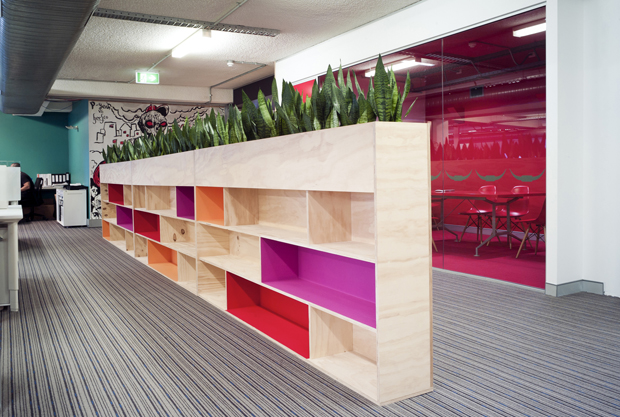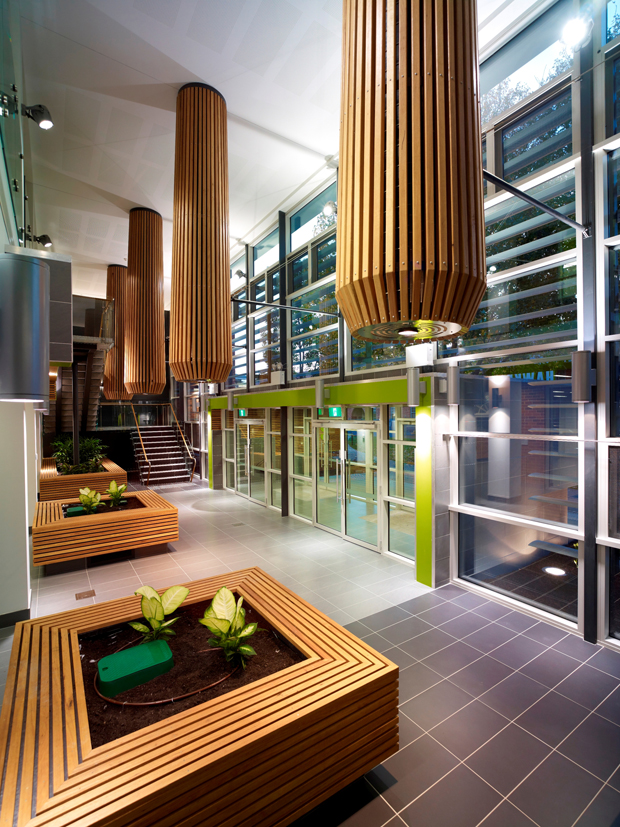Following on from BPN's previous article on timber species and treatments, we now look into how timber is being used in design.
Timber is being used in new and innovative ways design-wise in projects both locally and internationally.
This is because it is natural, sustainable, and the carbon cost of preparing and transporting the wood is significantly less than other building materials.
Blogging on the WoodSolutions website, architect Nicolas Pratt says anyone with a social conscience is trying to do their bit for the environment - a reason why architects love designing with timber.
“Not only is it a great source of insulation, but timber has a low embodied energy. This essentially means that the carbon cost of harvesting, milling, preparing and transporting wood is considerably lower than other building materials. General timber has half the carbon cost as steel and is 15 times less costly than aluminium,” Pratt says.
One issue when designing with timber, particularly in complex structural applications, he says, is that architects are at the mercy of timber engineers.
“Architects are reliant on engineers for full knowledge and while these consultants will generally find a solution to a given problem, architects are in a better position to push for innovation and think outside the box.
“Architects who are fortunate enough to have a close relationship with timber engineers are better equipped to deliver an outstanding project,” Pratt says.
 The Sound Alliance office fitted out with ECOply from Carter Holt Harvey.
The Sound Alliance office fitted out with ECOply from Carter Holt Harvey.
Thus why it is becoming increasingly popular in commercial structures. Also because of new work in long-span buildings and using construction tricks similar to those used with concrete, Timber Development Association chief executive Andrew Dunn says.
“Since timber has similar compressive strength to concrete, many of the tricks used on concrete are also applicable to timber. We now have post and pre-stress timber beams and walls, composite concrete timber floor, cassette timber floors to nine metres and so on,” he says.
For architects, designers and builders this means there is more choice when considering commercial buildings. Instead of two materials, steel or concrete, architects now have a third - timber.
And architects are embracing it.
A fit-out for the new offices of marketing and publishing company Sound Alliance called for timber finishes - even referencing Mad Men as inspiration - that were economical and environmentally friendly.
 The Sound Alliance office.
The Sound Alliance office.
Project architect at Environa Studio Rory Toomey used ECOply extensively in the fit-out as he is a ‘big fan of the product’, using it to wrap the floors, walls, ceiling and joinery, creating an immediate impact.
Multi-layered, plywood panels which incorporate the light create a piece of artwork and the meeting room wall.
Sustainability played a big part in the fit-out, with all the ECOply sheets screwed in place so in the future they can be removed easily and reused.
Plywood was chosen as it is strong and durable, and has a relatively low carbon footprint, creating little wastage.
“We specified Carter Holt Harvey ECOply for the peace of mind - you can trust the product,” Toomey says.
 The University of Western Sydney Climate Change and Energy Research Facility.
The University of Western Sydney Climate Change and Energy Research Facility.
Another use of timber being used innovatively was at the University of Western Sydney’s Climate Change and Energy Research (CCER) Facility at Richmond, New South Wales.
The refurbishment project incorporated the existing 1930s two-storey brick building with new research facilities, laboratories, postgraduate offices, lecture theatres and a publicly accessible atrium and conference exhibition space.
Blackbutt timber linings and details were used extensively in the development, creating a contemporary ‘vestibule tube’ which connects the east and west entries of the building.
 The thermal chimney stacks.
The thermal chimney stacks.
Blackbutt timber battens were used in the construction of four fully functioning thermal chimney stacks, which hang above the main atrium. The battens, in association with scrim cloth backing, were incorporated into wall and ceiling linings as an acoustic control, to absorb direct sound in both the public areas and the lecture theatre.
Suter Architects senior associate Michael McPherson says, “The design intent was to clearly differentiate the old from the new through material choices and detailing, while also maintaining the integrity of the original building.
“As a natural and locally produced material, timber was the ideal choice due to its conceptual link to the building’s function of providing empirical data to assess the impact of climate change on Australia’s land and water resources. The Blackbutt species was selected for its longevity, durability and versatility. Its golden yellow and pale brown colours worked well with other material selections, providing a perfect balance to the rich, earthy textures of the brickwork on the existing structure.”
Robert Gonda from Di Emme Creative Solutions, who designed and installed the thermal chimneys, says, “This project illustrates the distinct way in which timber can be used creatively. Installing the fully functioning thermal chimney stacks was a unique and challenging project for us and required a high level of customisation.”

